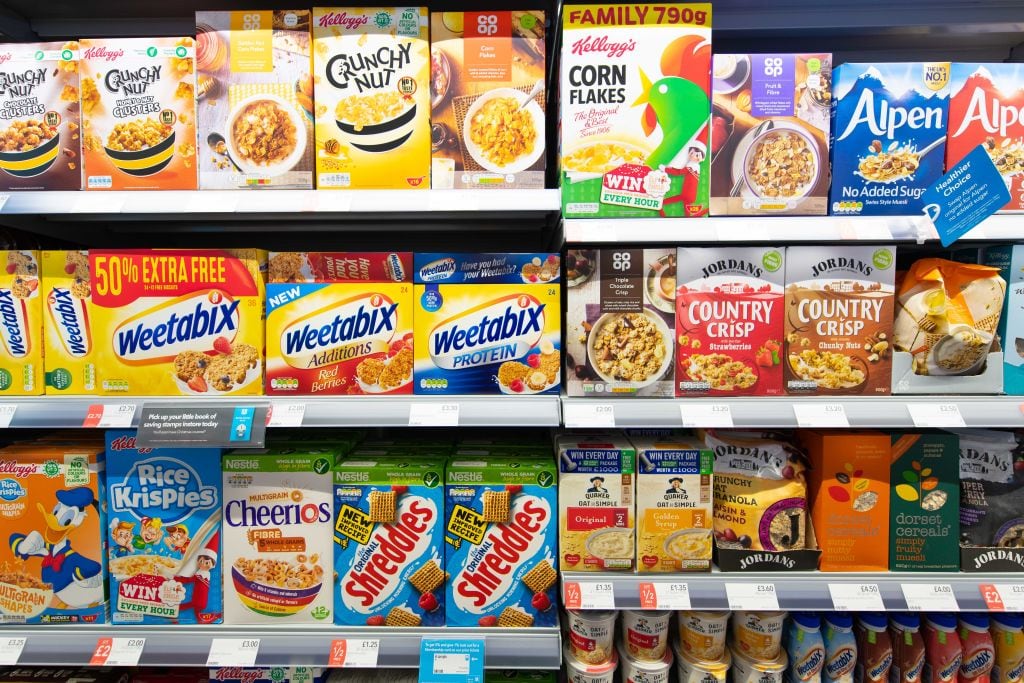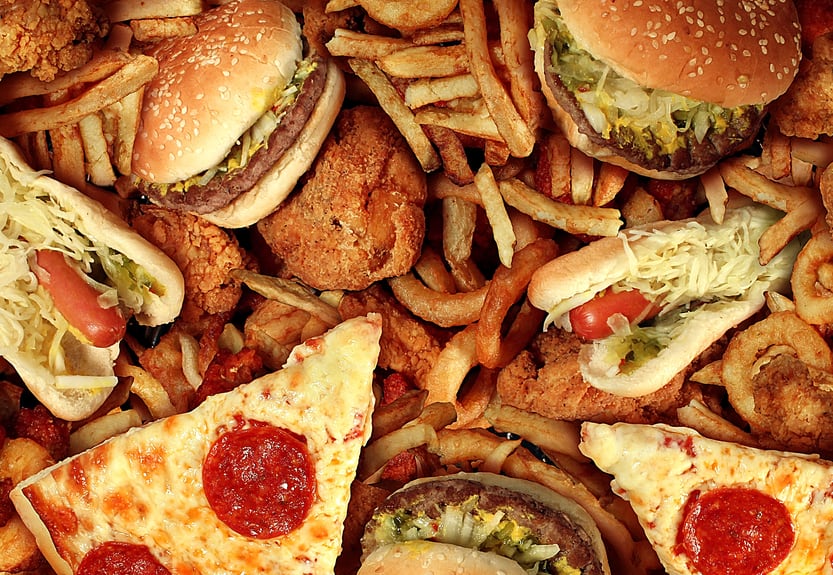Obesity – and childhood obesity in particular – is one of the biggest health problems facing European governments.
Obesity is a major cause of ill health, increasing the risk of non-communicable diseases such as heart disease, stroke, type II diabetes and cancer.
The UK government is currently conducting a consultation on whether further advertising restrictions are needed to stop the rising tide of obesity rates. According to its assessment: “Relatively small but consistent levels of excessive calorie consumption is the key driver of obesity. Evidence shows that children’s food preferences, purchases and consumption can be influenced by advertising.”
Junk food advertising has been banned during children’s programming since 2007. But ‘family’ shows where less than 25% of the audience are children are excluded from the restriction.
The UK government has set out four policy scenarios to potentially further restrict advertising of foods that are high in fat, salt and sugar (HFSS):
- Option A - ‘Do nothing’: Retain current set of food advertising restrictions for broadcast TV and online.
- Option B - Advertising restriction on HFSS products in scope of the Soft Drinks Industry Levy (SDIL), and PHE’s Sugar and Calorie Reduction Programmes, applied on broadcast TV only, via a 9pm to 5.30am watershed.
- Option C - Advertising restriction on HFSS products in scope of the SDIL, and PHE’s Sugar and Calorie Reduction Programmes. Applied via a 9pm to 5.30am watershed on broadcast TV and online.
- Option D - Advertising restriction on HFSS products in scope of the SDIL, and PHE’s Sugar and Calorie Reduction Programmes. Retain the current restrictions for broadcast TV and introduce a 9pm to 5.30am watershed online.
Local authorities are also taking action to curb children’s exposure to junk food advertising. For example, Transport for London banned junk food advertising throughout its network earlier this year.
Do bans work?
There is no clear consensus on whether blanket advertising bans would result in a shift in consumption patterns.
According to a paper on the UK proposals published by Rachel Griffith, Martin O’Connell, Kate Smit, and Rebekah Stroud of the Institute for Fiscal Studies, socio-economic factors, the response of the industry and the dynamics of the market will shape the outcome.
“Purchases are a pre-requisite for consumption. The effect of a ban on reducing HFSS consumption will depend, in part, on whether advertising leads people to switch between similar products (rivalrous effect), or expands the size of HFSS markets (expansionary effect),” she wrote.
“Firms are likely to respond to advertising restrictions by changing their advertising strategies, prices, or product nutrient compositions. The extent to which these responses will impact HFSS purchases following the introduction of a ban is uncertain.”
Charlie Riggall, communications director at marketing specialist UM, agrees that brands have typically adjusted their marketing strategies to find ‘loopholes’ to any new regulation.
According to the World Health Organization, estimates of the number of overweight infants and children in the WHO European Region rose steadily from 1990 to 2008. Over 60% of children who are overweight before puberty will be overweight in early adulthood.
“Brands have collectively spent hundreds of millions promoting their products in these sectors, so closer regulation presents a clear problem. Historically, we’ve seen that banning these advertisers encourages them to look for loopholes. These might include putting the brand on fashion or stationery products and then selling or even sampling them free of charge.”
For this reason, he believes that a collaborative approach between regulators and advertisers is usually more effective as businesses vie to position themselves as ‘good corporate citizens’. Pointing to developments in the gambling sector, he suggests that there are lessons to be learned for FMCG companies.
“Rather than flat out banning ads, we’re seeing some categories begin to self-regulate, particularly gambling. It keeps money flowing through the UK economy whilst also having an increasingly positive effect on society as a whole, and I think this is the biggest opportunity for brands and governments to work together,” he told FoodNavigator.
The digital dilemma: How to regulate when age ‘isn’t relevant’?
Banning HFSS advertising during children's programming is one thing. But how to regulate the complex digital space remains a thorny dilemma.
“Regulating digital is challenging and full of pitfalls,” Dan Parker, a former marketing executive turned founder of campaign group Living Loud, wrote in a report on the topic.
“Big Data really doesn’t know very much about us, but it has the ability to infer almost everything about us to a varying degree of accuracy. The more data it has the more accurate it can be – the more accurate is can be the more effectively it can deliver the right content to us whether that be entertainment, information, other people or advertising,” Parker explained.
This kind of dynamic profiling means questions like “what is the age profile of the audience?” are 'nonsensical' as the audience is “in no way a collective when it comes to the determination of the content including the ads”, Parker continued.
“In simple terms it works like this – an advertiser places some ads, they then analyse the people who respond to those ads and then target more ads at people similar to the people who responded… A simplified example: an advert for Frosted Unicorn Flakes gets a better response from people who like JoJo Bows and Disney’s Frozen, with a higher response rate when using an ad featuring dancing unicorns. With this data the programmatic systems will automatically buy more advertising to people who like JoJo Bows and Disney’s Frozen and will use the dancing unicorn creative.
“So, is this using data to target primary school age girls with ads likely to appeal to them? Strictly speaking no, the data is being used to target people who like JoJo Bows and Frozen regardless of their age or gender, but in effect, the significant majority would be primary school-age girls. The important thing to note is that age isn’t relevant.”
Riggall agreed that data is becoming a more important targeting tool than age online and he believes it would be extremely difficult for regulation to stop children being exposed to digital advertising of HFSS foods.
“The fact that current regulation makes it difficult to obtain data on under-18s makes it tricky to exclude them from digital ads.
“It’s a recurring theme in marketing that data is fast becoming the most valuable resource. However, being unable to target users under 18 means brands still fall back on broad demographic targeting. Many advertisers still generically target broad demographics such as ‘16-34-year-olds’, which covers everything from kids at school to parents with families. Banning ads aiming at those groups isn’t a precise tool, so we are becoming more reliant on data to exclude accurately.”

‘It requires more thought’
Riggall also stressed that online advertising is just one piece of the overall marketing landscape. “Online is only one part of the puzzle: you will never be able to stop a child watching a late-night TV show, or even walking past billboards, so it requires more thought – which could pressurise the government into another off-the-shelf ban to cover its back,” he suggested.
But he believes that to truly move the needle and change the habitual lifestyles of tens of millions of people, governments should be working alongside business and consumers to promote healthier lifestyles, moderation and an understanding of the health risks.
“Collaboration with brands is a better option than enacting blanket bans that encourage advertisers to look for loopholes in legislation,” he insisted. The example of the alcohol industry demonstrates how this approach can move product portfolios towards healthier options.
“We can see recently in the alcohol industry that the zero-alcohol variants have had a big advertising push, and are now even more visible on supermarket shelves. This shows a shift in behaviour for brands looking to be more open around potential health issues, matched with a consumer desire to try these products.
“The consumer push can be made mainstream and ‘the norm’ if backed by advertising: just look at all the work around inclusivity and diversity in today’s advertising by huge brands. Brands could also do more to focus on healthy lifestyle messaging if given the opportunity.”
He added that if the case of the tobacco sector teaches anything it is that regulation works ‘best’ when it is driven at a global or national level, through intragovernmental bodies such as the World Health Organization.




